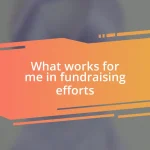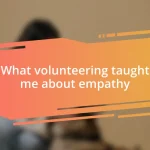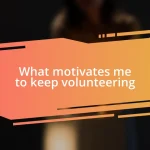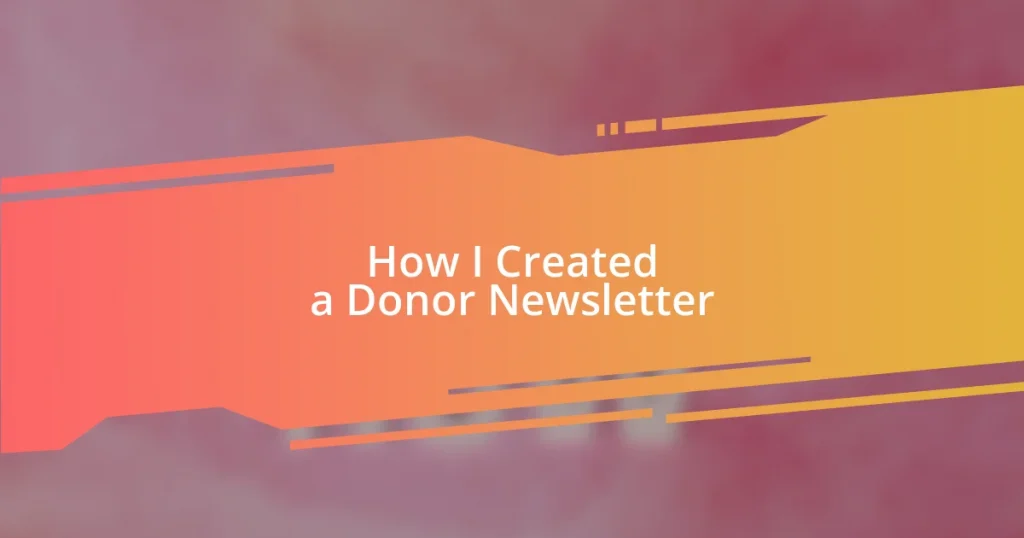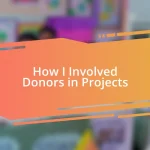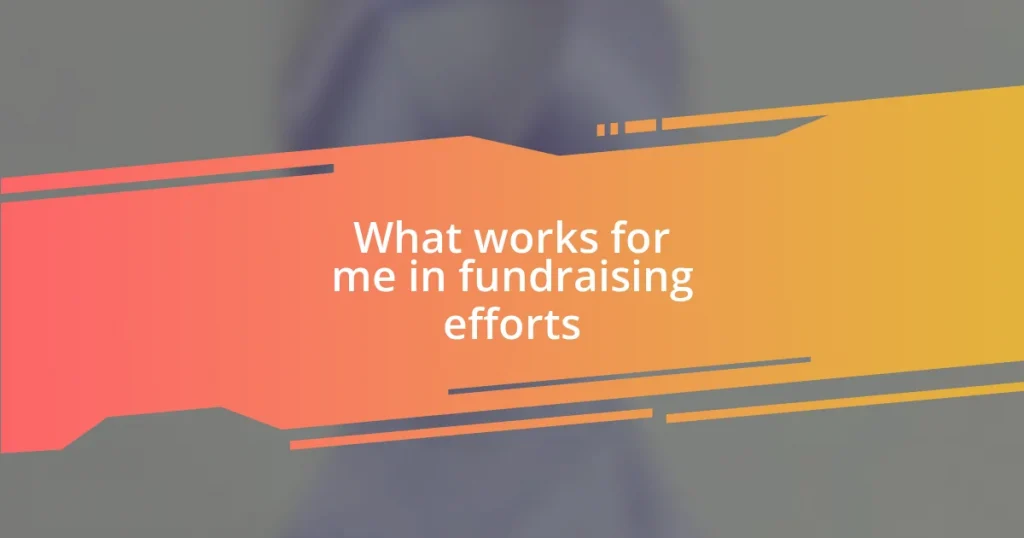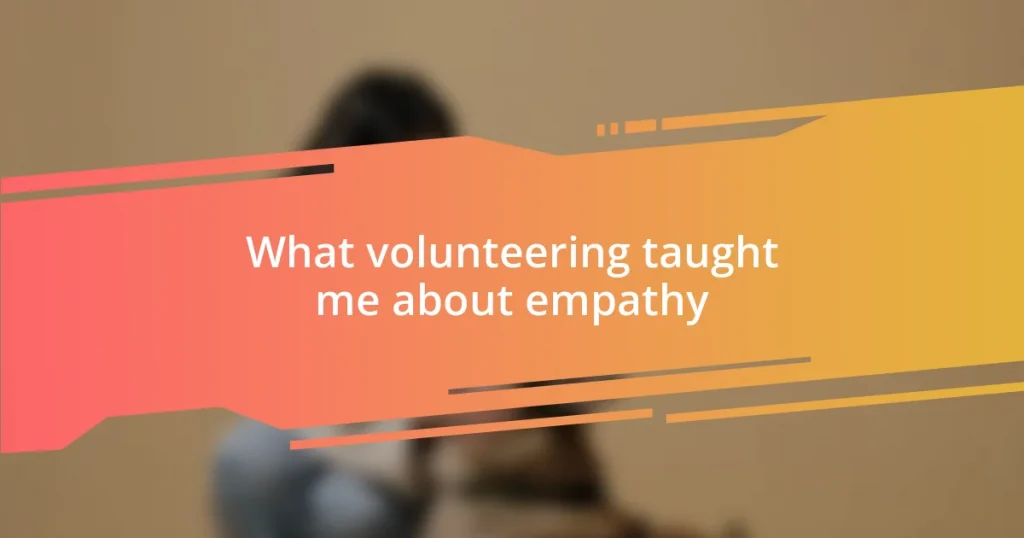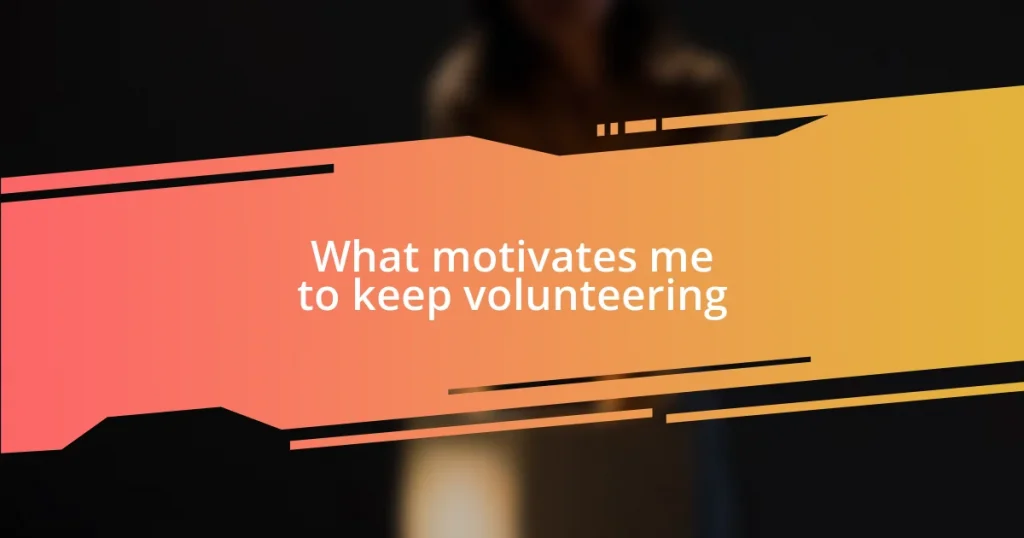Key takeaways:
- Newsletters strengthen relationships with donors by sharing impactful stories, updates, and opportunities for engagement.
- Identifying and understanding your donor audience enables tailored content that enhances connection and engagement.
- Incorporating clear calls to action and measuring success through metrics like open rates and feedback fosters continued donor participation and satisfaction.
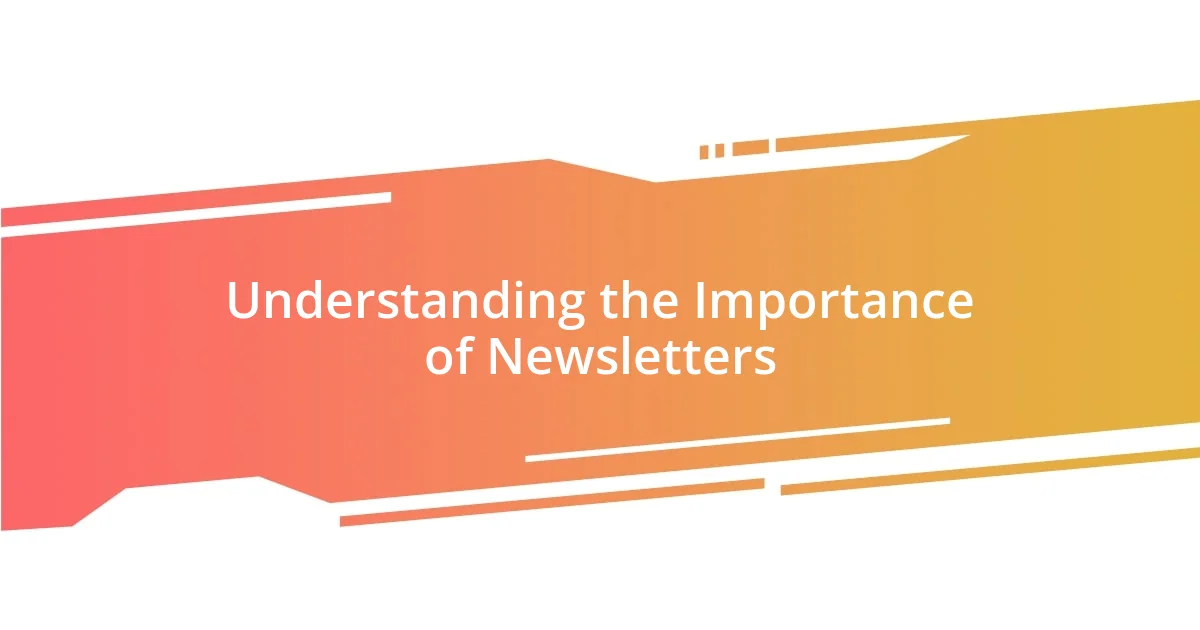
Understanding the Importance of Newsletters
Newsletters play a vital role in keeping donors engaged and informed. I remember the first time I opened a nonprofit newsletter that a friend forwarded to me. It was a simple design, but what struck me was the passion in the stories shared. It piqued my interest and made me feel like a part of the community. Isn’t it powerful when a few words can evoke feelings of connection and purpose?
In my experience, newsletters serve as a bridge between organizations and their supporters—creating transparency and trust. I once received a heartfelt update about a project I had supported, detailing its impact on the community. Reading about the tangible results made me more invested in future initiatives. How often do we crave that level of connection and insight from the organizations we support?
Moreover, newsletters aren’t just informative; they also inspire action. I’ve seen organizations include upcoming events or volunteer opportunities in their updates, which can spark interest and foster participation. When you receive a newsletter that invites you to get involved, it transforms the way you view your contribution. Isn’t it wonderful to think that a simple newsletter could encourage someone to take the next step and make a difference?
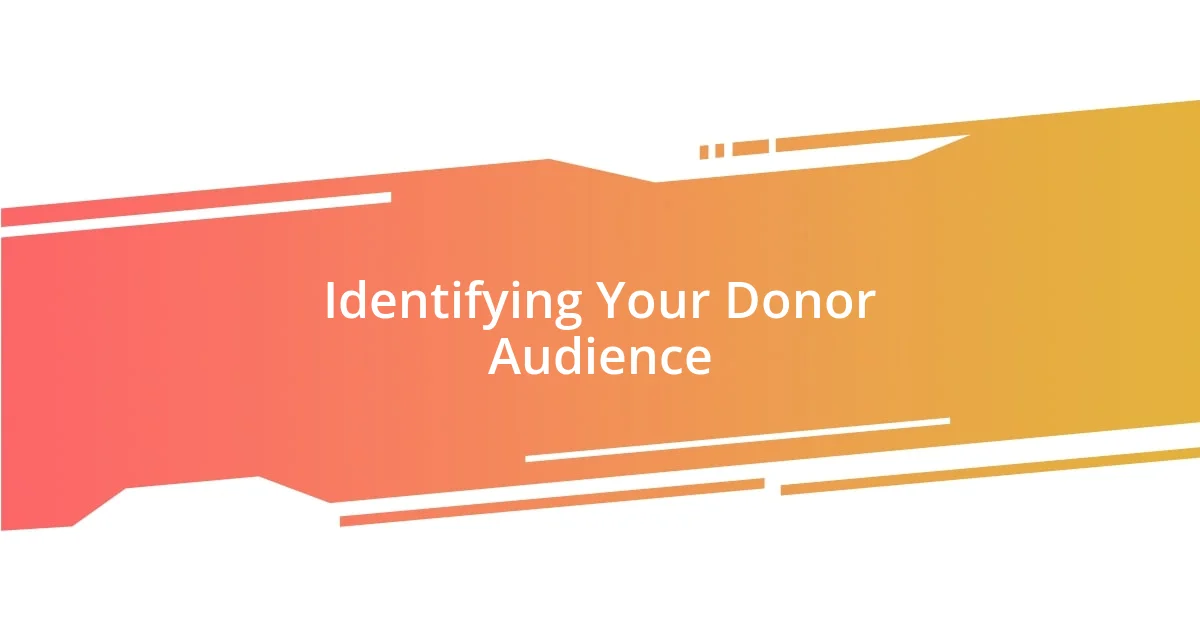
Identifying Your Donor Audience
Identifying your donor audience is an essential first step in crafting a newsletter that resonates. When I first started my donor outreach, I thought it would be enough to broadly target everyone. However, I quickly realized the power of truly understanding who my donors were. Each donor brings their own story and motivation, and knowing these details helps create a more tailored and effective communication strategy.
To pinpoint your donor audience, consider the following factors:
– Demographics: Age, gender, and location can influence the type of content that resonates.
– Giving History: Understanding past contributions aids in segmenting your audience—what have they supported?
– Interests and Values: What causes are they passionate about? This will shape your newsletter’s tone and stories.
– Communication Preferences: Some may prefer detailed updates, while others appreciate quick highlights.
– Engagement Level: Determine whether they are active participants in events or prefer to stay behind the scenes.
I remember a turning point when I decided to segment my audience based on their interests. By sharing stories that resonated with specific groups, I saw a noticeable increase in engagement. Tailoring content made my donors feel valued, deepening their connection to our mission.
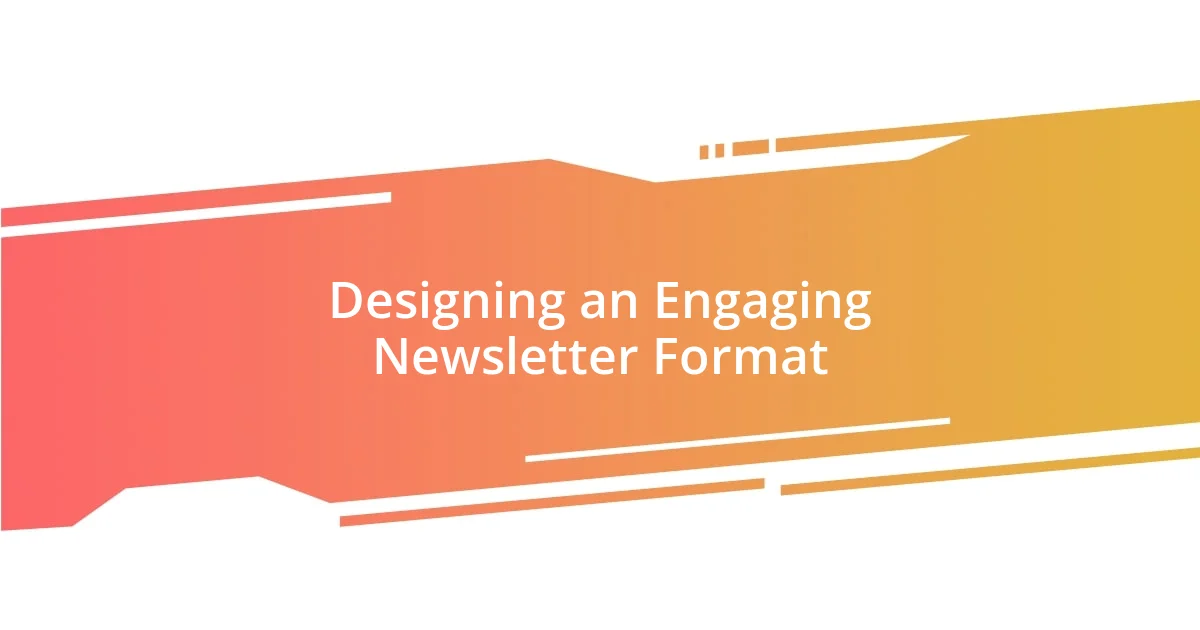
Designing an Engaging Newsletter Format
Designing an engaging newsletter format is crucial for capturing the attention of your donors. One approach I’ve found effective is using a clean, visually appealing layout. I recall the first newsletter I sent out—it was packed with information but lacked structure. By organizing the content into distinct sections with clear headings and bullet points, I transformed overwhelm into clarity. Donors appreciated this shift; it made their reading experience far more enjoyable and less daunting. Have you ever received a cluttered newsletter and wished for an easier reading experience?
Images can speak volumes, too. When I added compelling visuals to my updates, the response was tangible. Shares and opens increased significantly. A great image can highlight a project’s impact or evoke emotion, making readers feel more connected to the cause. I often experiment with different image placements and sizes, observing how they change the overall feel of the newsletter. Do you think visuals enhance understanding, or do they sometimes distract from the text?
I learned that balancing written content with visual elements is key. Using various font styles and sizes can guide readers through the newsletter while maintaining their interest. Consistent branding, like colors and logos, not only reinforces your identity but also fosters familiarity. I remember one donor mentioning how much they appreciated the professional look of my newsletter—it made them feel confident in their support. When you strike the right balance, your newsletter becomes a delightful experience rather than just another item in their inbox.
| Design Feature | Impact |
|---|---|
| Clear Headings | Enhances readability and organization |
| Compelling Visuals | Evokes emotions, increases engagement |
| Consistent Branding | Builds recognition and trust |
| Balanced Content | Keeps readers interested and informed |
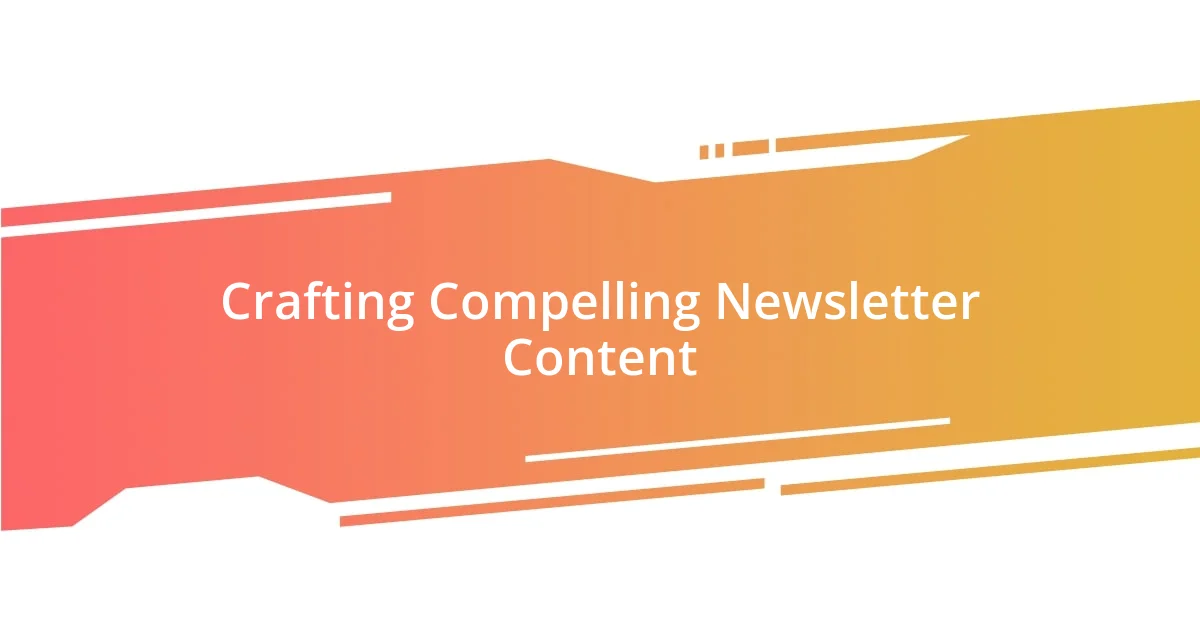
Crafting Compelling Newsletter Content
Crafting compelling newsletter content is all about storytelling. When I first began writing newsletters, I found it helpful to share real-life stories that illustrate the impact of donor contributions. It’s like painting a vivid picture for your readers—when they can see the direct correlation between their support and the outcomes, it ignites a deeper emotional connection. Have you ever read a story that made you feel like part of something bigger? That’s the kind of experience I aim to provide for my donors.
Another vital aspect is varying the content formats. I often mix heartfelt testimonials, engaging statistics, and updates on ongoing projects. This diversity keeps the newsletter fresh and appealing. For example, sharing a brief video update from a community member who benefited directly from donations not only adds a personal touch but also brings the impact to life in a way that text alone cannot. Have you considered the power of video in your newsletters? It can transform dry updates into captivating narratives.
Lastly, incorporating a call-to-action is essential. After sharing compelling content, I’ve discovered that inviting readers to take the next step—whether it’s attending an event, sharing a social media post, or making a donation—gives them a way to stay engaged. I remember one newsletter where I asked readers to share their own stories related to our cause. The flood of responses not only made them feel valued but also created a wonderful sense of community. How might your readers engage if you prompted them to share their experiences? This interaction can foster a sense of belonging, making the newsletter much more than just a one-way communication tool.
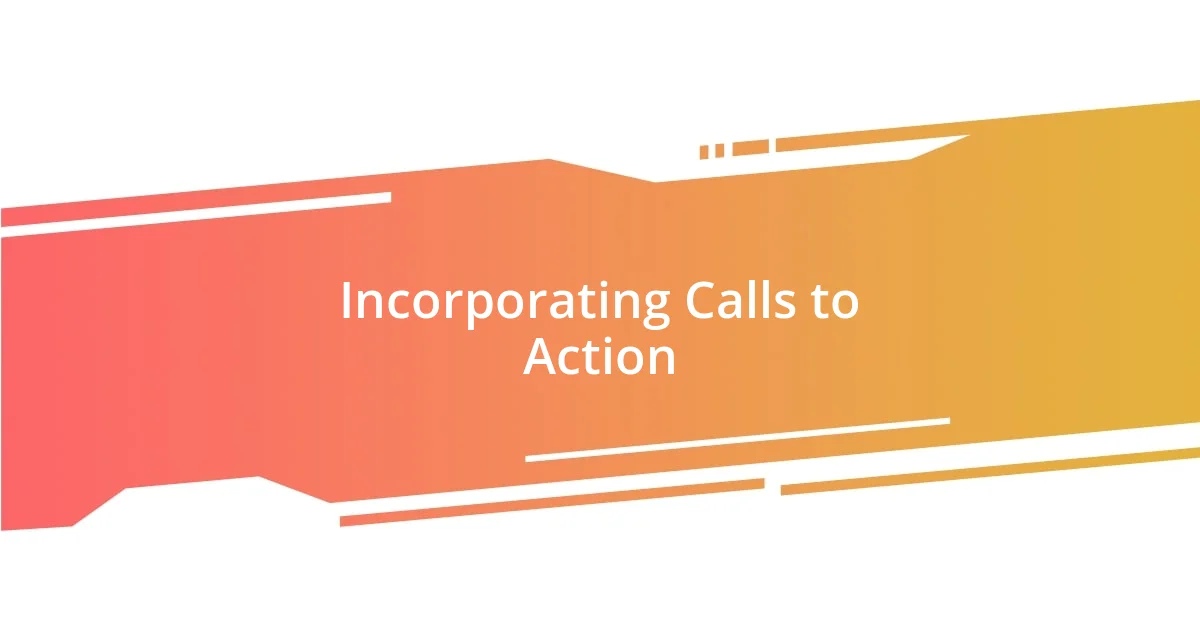
Incorporating Calls to Action
Incorporating calls to action (CTAs) can make a significant difference in your donor newsletter. I vividly remember when I first implemented a simple “Donate Now” button at the end of my updates. The immediate uptick in engagement was astonishing! Readers appreciated having a clear next step, and it made them feel more empowered to support our mission. Have you thought about how clear CTAs could influence the way your donors interact with your content?
I learned that the placement of CTAs matters just as much as the wording. Initially, I would tuck them away at the bottom of my newsletters, but I noticed a lack of response. By experimenting with bold placements—like introducing them mid-way through captivating stories—I acknowledged the idea that timing can drive action. When was the last time a well-placed prompt caught your attention? It’s amazing how a strategic reminder can spark interest and motivate a reader to click through.
Furthermore, I often personalize my CTAs to speak directly to my audience. When I began using phrases like “Join fellow supporters in making a difference” instead of a standard “Click here,” I felt a shift in engagement. It created a sense of camaraderie and urgency. After all, who doesn’t want to be part of something larger? Crafting CTAs that resonate with your readers can transform passive readers into active participants, enriching the overall relationship with your donors.
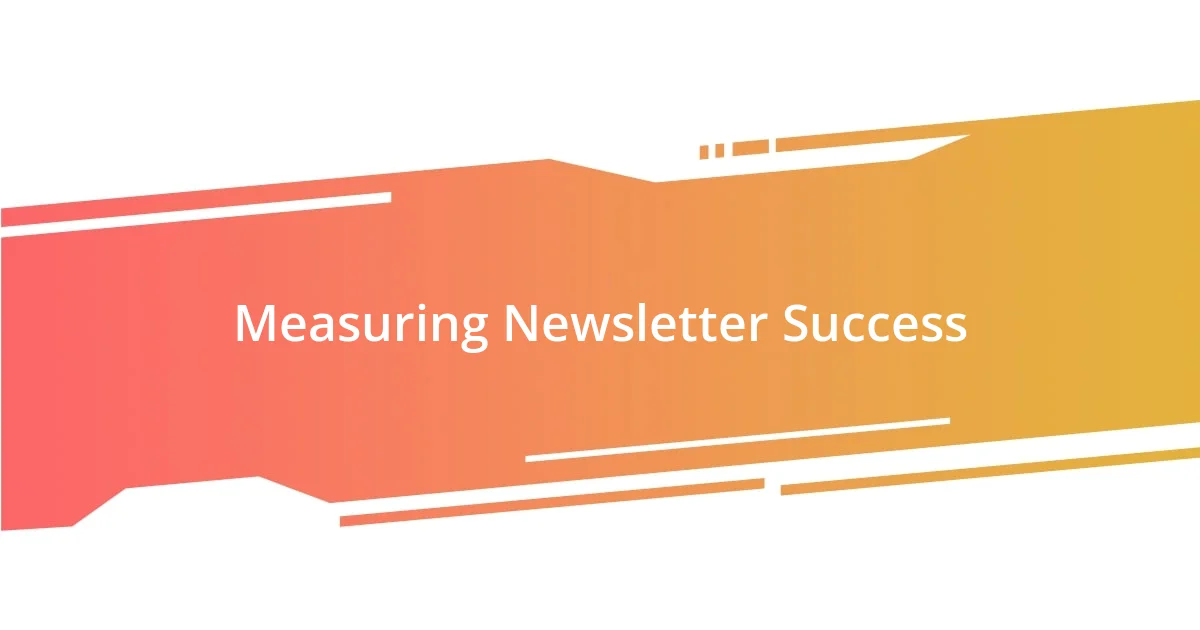
Measuring Newsletter Success
Measuring the success of a donor newsletter is a multifaceted endeavor. One effective way I’ve tracked success is through open rates. When I implemented a subject line strategy, I noticed significant improvements. For instance, after a particularly compelling subject line, the open rate soared, and I couldn’t help but feel a sense of pride—wasn’t it incredible how just a few words could spark curiosity?
Another valuable metric is the click-through rate. I recall a particular issue where I highlighted an upcoming fundraising event. After analyzing the data, I was thrilled to see a 30% increase in clicks on the RSVP link. This surge told me that engaging content, paired with a clear call-to-action, truly resonates with readers. Isn’t it rewarding when data reveals the genuine interest and excitement of your audience?
Lastly, I look at feedback and engagement levels as a measure of success. For example, after a newsletter that shared an impactful story, I received an outpouring of messages from donors who connected personally with the content. Their responses showed that the newsletter was more than just a communication tool; it fostered genuine relationships. How often do we think about the emotional connection we create through words? That connection is ultimately what drives ongoing support and deeper investment in our cause.
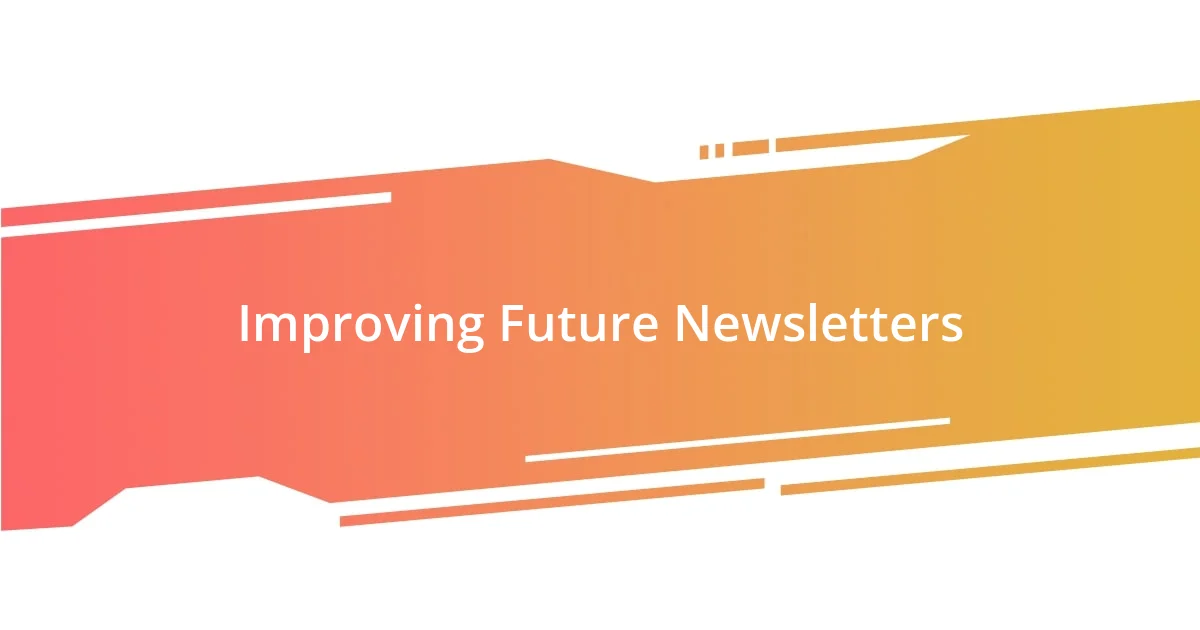
Improving Future Newsletters
Improving future newsletters is an ongoing process of refinement. I’ve found that incorporating donor feedback is invaluable. After one issue, I received a heartfelt suggestion from a donor who wanted more behind-the-scenes content. It sparked an idea: why not share anecdotes and insights directly from our team? That personal touch transformed the next newsletter, making it feel like a genuine conversation rather than a one-way street.
Another key improvement I’ve embraced is A/B testing different layouts and content types. I remember the excitement of trying out a fresh, visually appealing template for a holiday edition. The positive shift in reader responses was undeniable; they appreciated the change. I now routinely experiment with different formats to keep things lively. It poses an interesting question: how much do visuals influence your connection with the content you receive?
Lastly, I believe storytelling is crucial in creating a memorable newsletter. One time, I shared a compelling story about a donor whose contributions led to significant changes in our community. The emotional resonance was palpable, and I received numerous replies thanking me for sharing such an inspiring narrative. It made me realize that our donors want to feel connected to the impact we’re making together. In what ways do you think your newsletter could tell stories that resonate deeply with your audience?
